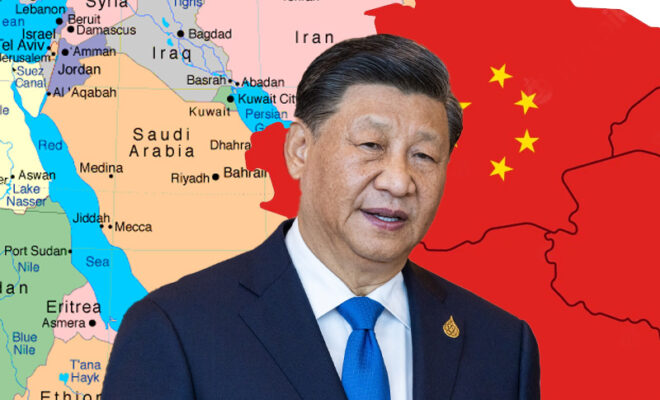China’s Diplomacy in Middle East, and India

Hossein Amir-Abdollahian’s Gulf tour, which included stops in the capitals of the United Arab Emirates, Oman, and Kuwait, offered a new regional forum for Tehran and these Arab states. If this plan succeeds, it could change geopolitics beyond the Middle East.
China’s diplomacy in the region, which has become more vocal and visible, would also benefit if Iran builds trust with its Arab neighbors. However, being more visible as a rising power benefits more than just China. Beijing’s desire for a larger footprint helps Middle Eastern powers play the U.S. and China against each other. This contributes to a growing bipartisan political consensus in Washington to counter its Asian competitor’s power, especially in areas where America has long been unchallenged. Beijing views transactions as purely economic, not moral or ethical.
Beijing’s desire for a larger footprint helps Middle Eastern powers play the U.S. and China against each other.
India’s equation differs. Despite its “multipolar” geopolitical framework, New Delhi may not be able to hedge like Middle Eastern states. Indian PM’s state visit to the U.S. showed the country’s growing confidence in the West and its growing concerns about China’s aggression. The Deadly 2020 Himalayan border clashes between India and China shattered bilateral relations and reshaped New Delhi’s strategic and security thinking. The new reality has not only recalibrated India’s view of China but also shown that a growing Chinese footprint globally will harm New Delhi’s interests.
India’s partners in the Middle East are engaging more with Beijing on foreign policy, security, technology, and defense, making it difficult to cement India’s national interests with them. While Chinese tech companies like Huawei expand in the Middle East, New Delhi has restricted its access to its domestic market, especially critical infrastructure. China’s role in brokering a deal between Saudi Arabia and Iran to restore diplomatic relations after seven years has raised questions about how a strong Iran backed by Chinese investments through Tehran and Beijing’s long-term strategic partnership might affect Arab powers and Israel. With Israeli Prime Minister Benjamin Netanyahu’s upcoming trip to China and Chinese President Xi Jinping’s December 2022 visit to Saudi Arabia for the first China-Arab States Summit, the Tehran-Riyadh détente partially answers this question.
New Delhi faces these challenges. New institutions like the I2U2 grouping (India, Israel, the U.S., and the UAE) are one indirect Indian response to China’s growing influence in the region. All participating states support this new “multilateral” framework, which focuses on geoeconomics, high technology, supply-chain diversification, and risk mitigation in a post-pandemic world where reliance on China as the world’s factory is a security risk.
Israel and the UAE see the I2U2, still in development, as a way to keep the U.S. in the region. In recent months, these narratives have been widely discussed, but New Delhi’s role in the region’s security seems independent of any regional security architecture. India has expanded its military exercises with Saudi Arabia, the UAE, Oman, and Egypt in recent months. The exchanges have expanded from port calls to operational mandates for interoperability and from the Navy to the Army and air force.
In 2019, the Indian Navy began Operation Sankalp to protect Indian-flagged oil tankers in the Strait of Hormuz and the Gulf of Oman amid rising tensions between Iran, the U.S., and others.
India’s strategic and economic approaches to the region are parallel but distinct. The India-U.S. partnership fuels regional minilaterals, economic ties, and relationships. This also raises an important question: How will New Delhi manage its strategic autonomy, which has allowed it to maintain strong relations with Israel, Iran, and Saudi Arabia? For now, China has done this by using its economic power and regional states’ desire to use Beijing as a counterbalance to the U.S. India must find other ways to balance its relations with Iran, which is under pressure from U.S. foreign policy and sanctions. India stopped buying Iranian oil to comply with sanctions and show the U.S. After India bought cheap Russian crude oil despite sanctions during the Ukraine war, this decision was questioned.
Also Read:- IMF Requests India To Remove Rice Export Bans. What Should India Do?
The regional powers’ plans will keep China in the Middle East. While the goal may be to keep the U.S. more engaged in the region, doing so may also allow countries like India to maintain a degree of balance while slowly accepting the idea that countering Chinese influence in areas like the Middle East will require robust collaboration to cover economic and diplomatic shortfalls. India and the U.S. already look beyond the Indo-Pacific and the “Quad” (India, the U.S., Australia, and Japan) for economic cooperation. Next may be the Middle East.



